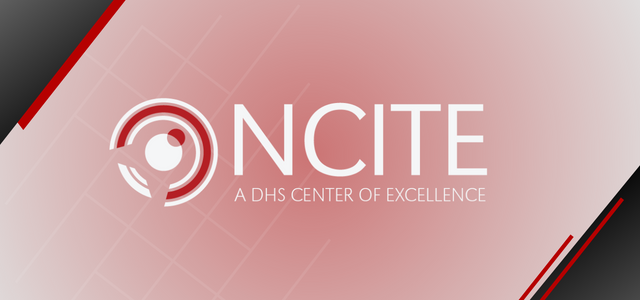Document Type
Report
Publication Date
6-30-2021
Abstract
Intelligence is vital to national security. Since 2001, there has been a significant movement to protecting U.S. borders and citizens from experiencing the devastating effects of terrorism, among other national security threats. Since its inception in 2002, the Department of Homeland Security has founded the creation of a national security framework based on intelligence. However, there remains significant gaps in the standardization of intelligence training and education. This may be due in part due to the differing missions of DHS components under the overarching umbrella of national security. From experience, it is known that homeland security not only encompasses counterterrorism, but also border protection, emergency management, cyber security, and more. Due to the multifaceted and ever evolving nature of homeland security, there are 17 DHS components to approach the broader issue of national security. Scholars debate on how intelligence education and training should be taught, and who should teach this curriculum. When intelligence training was in its initial stages, most of it was conducted in-house by government agencies. As the demand for homeland security efforts have increased following 9/11, universities have developed homeland security intelligence programs to accommodate the instruction gap. A major issue with two separate entities creating courses to fulfill the intelligence demand is the variation in education and training content. While some scholars believe that a greater professionalization of intelligence careers would help better establish core competencies, others argue that not all levels and types of analysis require the same types of competencies (Bruce and George, 2015, p. 4; Moore and Krizan, 2009). There not only exists a lack of education standardization in the intelligence community, but also in core competency definitions. Due to the overall lack of IC standards in both IC in-house training and university education, some programs fail to include content that is relevant to a professional intelligence career, which creates employee pipeline issues for DHS intelligence needs. This slows the hiring process and exacerbates the issues that come with understaffing, which include low employee morale, high turnover, and demand for more versatile employees. A lack of DHS-wide core competencies only feeds this issue with variation of DHS component missions. In response to the uneven education that employees may receive either from a university or instruction in-house, some agencies have established their own schoolhouses with separate competencies and standard training. Through ethnographic interviews with Intelligence Community members including many DHS participants, as well as in-depth research and domain analysis drawing on scholarly literature and published government reports, Project 10 researchers found a lack of benchmarks for core competencies associated with intelligence analysis as well as multiple gaps in the current implementation of intelligence training and education. There was very little research and literature pertaining to intelligence analysis standards that also mapped how competencies are measured, implemented, and organized. With little guidance or uniformity, the intelligence community entry-level workforce talent demonstrates how knowledge, skills, and abilities vary in similar positions when core competencies are not utilized or enforced. The absence of standardization and structure highlights the need for core competency framework across the entire intelligence community that not only establishes intelligence analysis core competencies but also recommends how these practices and standards could be integrated in a meaningful manner that would positively affect DHS’ mission performance. 5 Based on this analysis, the research team recommends the intelligence analyst working within DHS and its components should have the basic six Core Intelligence Analysis Competencies: Analytical Writing, Communication, Critical Thinking and Reasoning Methods, Collaboration, Project Management, and Basic Technology. In addition to the Core Intelligence Analysis Core Competencies, it is desirable for the intelligence analyst to have Intelligence Fundamentals Skills – this includes familiarity with national intelligence structures and policy, intelligence cycle, and intelligence writing and analytic tools. Despite recommendations provided in both the 2010 Common Competencies for State, Local, and Tribal Intelligence Analysts document by SLT Working Group and the 2015 Analyst Professional Development Road Map, there is no still no baseline standard of competencies that define the role and function of all entry-level intelligence analysts within DHS and its components. To this day, it remains fragmented and siloed, with each component providing only in-house specialized training that is relevant to their unique mission. Echoing the calls to action by both the academic works the research team reviewed and intelligence enterprise practitioners the team interviewed, our analysis demonstrates that being able to standardize this set of competencies is critical to the DHS’s ability to provide and integrate timely intelligence and information, and not merely just a question of hiring and promoting potential job candidates. Furthermore, the team found that the development and inclusion of a standardized Core Intelligence Analyst Competency Matrix that is integrated into the DHS Performance and Learning Management System, and utilizes the Intelligence Community Centers for Academic Excellence can increase the employment pipeline and academic needs, and improve retention and merit-based advancements through educational opportunities.
Recommended Citation
Black, Michelle; Obradovic, Lana; Bender, Elizabeth; Benedix, Claire; Nelson, Josie; Van Robays, Grant; and Youngberg, Christiane, "Project 10: Training and Education Research and Implementation Strategies for Homeland Security Intelligence Community" (2021). Reports, Projects, and Research. 28.
https://digitalcommons.unomaha.edu/ncitereportsresearch/28
Files over 3MB may be slow to open. For best results, right-click and select "save as..."


Comments
A Research Project Funded by A U.S. Department of Homeland Security Center of Excellence National Counterterrorism Innovation, Technology, and Education Center (NCITE) Theme – Workforce Development